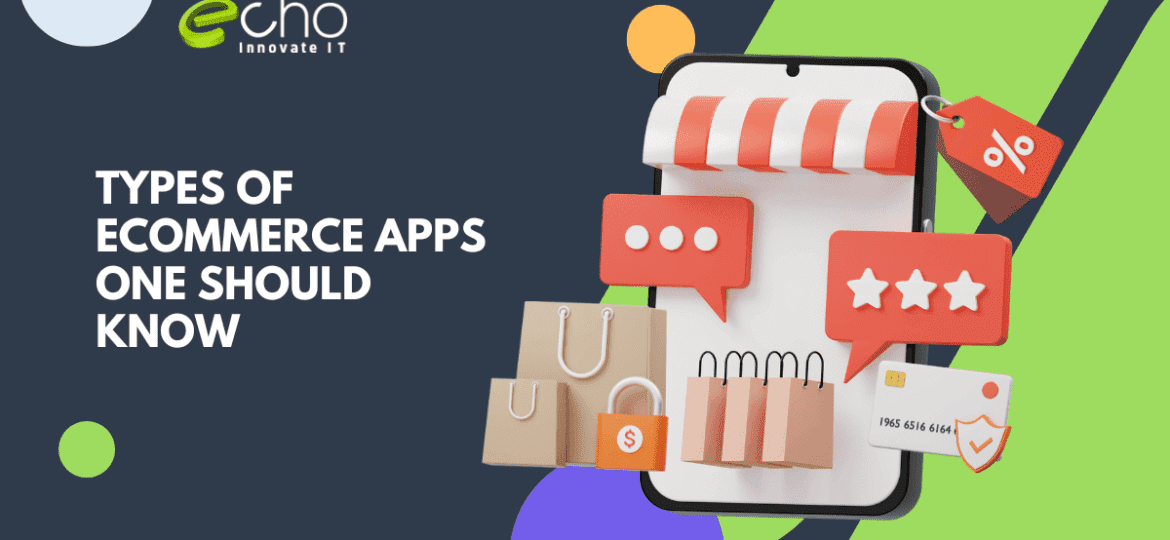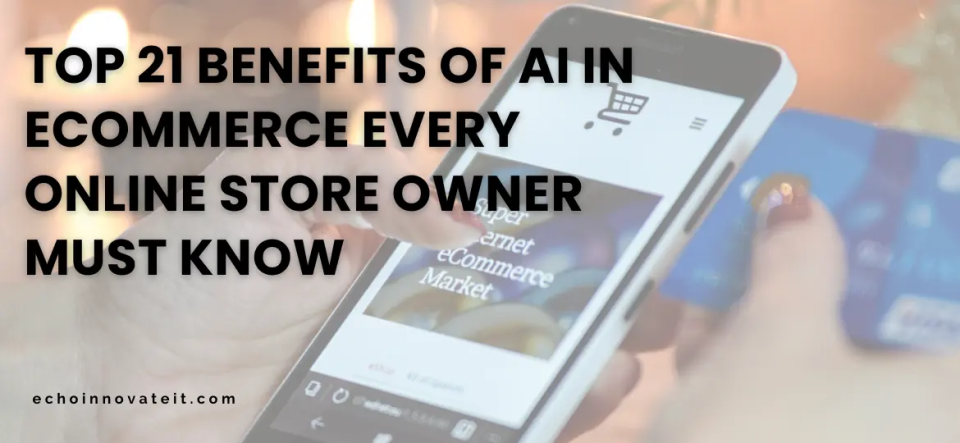What Are Ecommerce Applications?
Top Types of eCommerce Apps That Power Sales in 2025
In 2025, businesses must deliver seamless, mobile‑first shopping experiences that engage customers across Android and iOS devices. eCommerce app development has evolved into a strategic business channel—with advanced personalization, AI‑driven recommendations, and frictionless checkout flows that drive revenue growth. The following are the major types of eCommerce mobile apps you need to know to stay competitive:
1. B2B eCommerce Apps for Wholesale & Distribution
Business‑to‑Business (B2B) eCommerce apps support bulk ordering, account management, and pricing tiers tailored for retailers and suppliers. Brands like Amazon Business and Alibaba (alongside custom iOS apps and Android apps) provide enterprise solutions that streamline procurement and supply chain workflows.
2. B2C Retail Mobile Apps
Business‑to‑Consumer (B2C) apps deliver catalog browsing, product search, cart management, push notifications, and customer loyalty features for direct-to‑consumer brands. Modern Android and iOS native applications enable mobile-first UX, personalized offers, and faster checkout—crucial for maximizing conversion rates and average order value.
3. C2C & Marketplace Apps
Consumer‑to‑Consumer (C2C) platforms like eBay or Craigslist enable peer-to-peer buying and selling. In 2025, many of these are mobile‑native apps featuring social commerce integrations, in-app chat, escrow payments, and user ratings—boosting trust and ease of transactions.
4. Progressive Web Apps (PWAs) with eCommerce Features
PWAs deliver app‑like interactions (offline support, push alerts, and install prompts) directly via web browsers. They offer cross-platform reach with near-native speed and are often used alongside Android and iOS apps to capture mobile traffic without users needing to visit app stores.
5. Subscription & On‑Demand Shopping Apps
Subscription commerce apps (for recurring deliveries or digital services) and on‑demand apps (groceries, meal kits, curated products) leverage Android and iOS mobile apps to deliver recurring value and predictability. AI and personalization fuel retention and engagement.
6. AR‑Powered Shopping & Intelligent Commerce Apps
Augmented Reality (AR) apps let shoppers visualize products in real space (e.g., furniture apps). Combined with AI/ML recommendation features and predictive analytics, these apps deliver immersive experiences that boost conversions and customer trust.
7. Niche & Vertical‑Specific Retail Apps
App solutions tailored to niches like baby products, sports gear, eco‑friendly home goods, or fashion rentals are optimized with mobile-optimized interfaces and category-focused push campaigns and SEO strategies to draw highly motivated shoppers.
Why Investing in eCommerce App Development Makes Sense in 2025
Mobile eCommerce is now dominant in the U.S. market: mobile sales account for more than 50% of total eCommerce revenue. Businesses that offer native Android apps or iOS apps benefit from better user retention, engagement, and in-app sales. Compared to mobile websites, mobile apps deliver faster load times, smoother checkout processes, richer personalization, and push notification capabilities that significantly lower cart abandonment and increase lifetime customer value.
2025 eCommerce App Features That Validate Trust (Google E‑E‑A‑T Compliance)
Secure authentication and privacy safeguards (e.g. biometric login on Android & iOS, PCI‑compliant payment gateways)
Authoritative content and expert product descriptions, written or reviewed by industry experts
User reviews, ratings, and social proof integrated directly into app interfaces
Transparent policies including shipping, returns, and data usage
Ongoing app updates and responsive maintenance, demonstrating trustworthiness and usability
How to Build a Best‑in‑Class eCommerce App in 2025
Market Planning & Strategy
Conduct comprehensive U.S. keyword and competitor research, focusing on high‑search‑volume phrases like “best Android shopping app,” “iOS retail app,” “mobile commerce app,” and “B2B eCommerce mobile platform.” Use the insights to guide mobile app features and SEO-optimized copy.
UX/UI for Mobile Apps (Android & iOS)
Design intuitive interfaces optimized for touch interaction, fast load speeds, and clear information architecture. Prioritize product discovery, smart filtering, and one‑tap checkout flows to reduce friction.
Development Across Platforms
Choose native app development using languages like Swift for iOS and Kotlin for Android if performance is paramount. Alternatively, use cross‑platform frameworks like Flutter or React Native to share iOS/Android code while retaining near-native UX.
AI, AR & Backend Integration
Integrate AI/ML modules for predictive product recommendations, dynamic pricing, and personalization. Support AR features for immersive product exploration. Ensure backend capability for order tracking, CRM, ERP, and third-party payment or shipping systems.
Rigorous Testing & Deployment
Perform thorough testing across device types (Android phones, tablets, iPhones). Run functional, user‑acceptance, security, and performance testing. Publish your app in Google Play and App Store, leveraging app store optimization (ASO) with USA‑centric keywords and compelling visuals.
Ongoing Support & Optimization
Track app performance metrics (retention, conversion, session duration), collect feedback, and update app experiences—and product content—regularly. Monitor Apple and Google UX guidelines compliance and maintain E‑E‑A‑T with expert content updates.
Sample Modern Use Cases
A B2C fashion brand with an Android + iOS app that uses AR for virtual try-ons, push notifications for new collections, and personalized product suggestions.
A B2B wholesale supplier offering a branded Android app with bulk ordering, dynamic pricing tiers, and integration to enterprise ERP systems.
A subscription commerce player with both native apps and a PWA, sending reminders, cross-sell offers, and in‑app content aligned to user preferences.
SEO & Audience Engagement Tips
Use keyword-rich subheadings like “eCommerce mobile app development USA 2025”, “Android app commerce trends”, and “iOS app shopping solutions”.
Incorporate internal links to related blog posts (e.g. “7 Steps to Build an eCommerce App in 2025”).
Leverage structured data (JSON‑LD) for product listings and FAQs.
Add authoritative backlinks to credible sources—such as Statista figures on mobile commerce adoption or market growth.
Publish author bio detailing real credentials and experience in mobile app development to establish expertise and authoritativeness.
Ecommerce is the online purchasing and selling of goods and services via an ecommerce website. An ecommerce app development is a software programme that is especially developed to aid in or add functionality for designing ecommerce websites. Typically, ecommerce app development refers to the vast selection of accessible shopping cart programmes, as well as other software that integrates eCommerce payment gateway choices as plug-ins or as part of an overall ecommerce applications. Shopping carts may only be added to websites created with software that was not intended specifically for ecommerce and has no ecommerce-specific functionality in its initial configuration.
Types Of Ecommerce Apps

Business-to-Business Ecommerce apps
It refers to the electronic exchange of goods, services, or data between companies, as opposed to between businesses and customers. Alibaba, Amazon Business, and Quill are examples of marketplaces where businesses sell to retailers, who then sell to consumers. Thus, the products offered here may serve as raw materials or finished goods for other sectors in the future.
Business-to-Consumer Ecommerce apps
Business-to-consumer (B2C) refers to the retail portion of online commerce. It is when companies sell their goods, services, or information directly to customers. Amazon is the most well-known of these websites. It is the leader in the B2C sector.
Consumer-to-Business Ecommerce apps
Consumer-to-business (C2B) is a kind of Ecommerce in which people offer their goods and services online for businesses to bid on and buy. This is the reverse of the conventional B2C approach of business. iStock is a well-known example of a B2B portal that provides royalty-free pictures, images, video, and design components.
Consumer-to-Consumer Ecommerce apps
Consumer-to-consumer (C2C) Ecommerce involves the online exchange of goods, services, and information between consumers. These transactions are often carried out via a third party that offers an internet platform. eBay and Craigslist are two notable illustrations of such top Ecommerce websites.
Most Common Ecommerce Applications
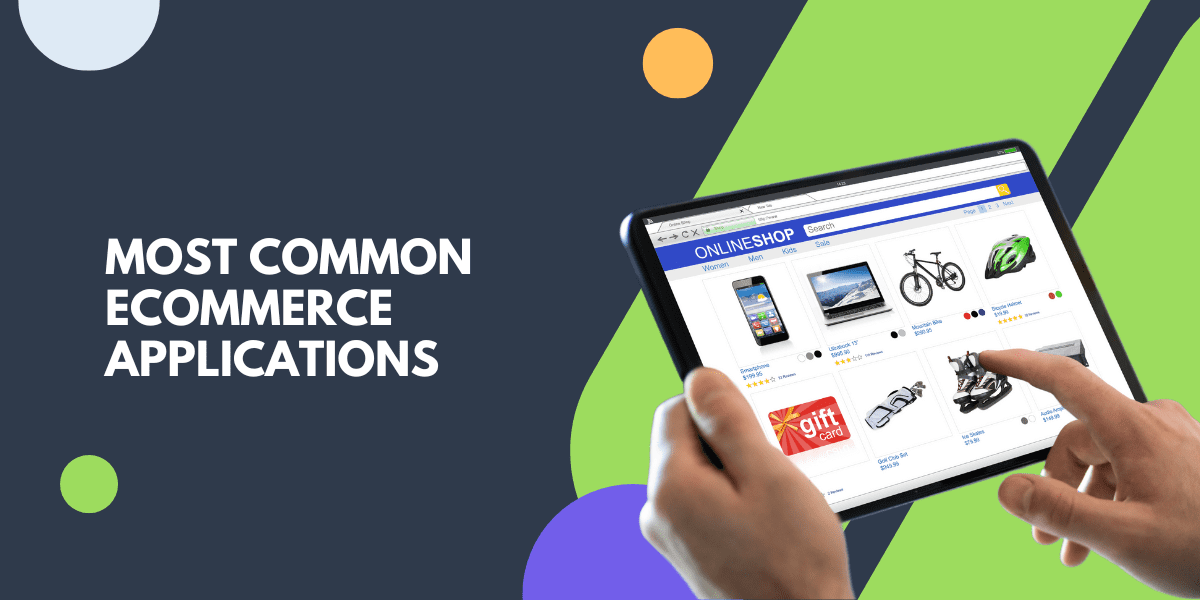
Wholesale and retail markets
The use of Ecommerce in this industry may take many different forms. E-retailing, also known as business-to-consumer or B2C retailing, refers to the practice of selling products and services through online storefronts that are developed with the assistance of electronic catalogs and virtual shopping carts. For example, furniture app like Wallapop that sells used furniture. M-commerce, also known as mobile commerce, is a subset of retail Ecommerce. In this kind of transaction, a customer makes purchases of products and services using their mobile device while navigating a mobile-optimized version of a top Ecommerce website.
Finance
The connection between online business and traditional commerce is stronger than it has ever been. Ecommerce app development plays a crucial role in the day-to-day operations of financial institutions including banks and stock exchanges. Checking your balance, paying bills, transferring money, and other services are all available via online banking. People are able to engage in electronic trading via the use of online stock trading, which provides information on stocks in the form of performance reports, analyses, charts, and other similar materials on top Ecommerce websites.
Manufacturing
Manufacturing supply chain activities also leverage ecommerce; typically, a few firms join a group and build an electronic exchange to simplify the buying and sale of products, exchange of market information, and back office information such as inventory management, and so on.
Applications for mobile devices and the web
Mobile commerce, often known as m-commerce apps, is a subset of retail Ecommerce that is becoming more popular. Ecommerce website development services have evolved into a standard practice for companies to demonstrate their operational skills.
Online Booking
The travel and tourist business is booming right now, and as a direct consequence, the use of top Ecommerce applications like online booking is becoming more popular. Online booking makes it easier for consumers to make reservations for travel necessities such as airline and railway tickets, hotel rooms, vacation packages, and transportation services, among other things.
E-banking
E-banking, sometimes known as online banking, is a kind of a top Ecommerce website that has significantly streamlined people’s formerly laborious and time-consuming banking procedures. Customers of banks are able to simply complete transactions online, eliminating the need to stand in huge lines at the banks themselves.
Auctions
Using Ecommerce technology, auctions may be held online, which brings together a large number of individuals from all over the world and enables the buying and selling of goods at prices that are negotiated by the participants. It opens up the opportunity for participation in auctions to a greater number of individuals.
How Can Ecommerce Applications Benefit Your Business?
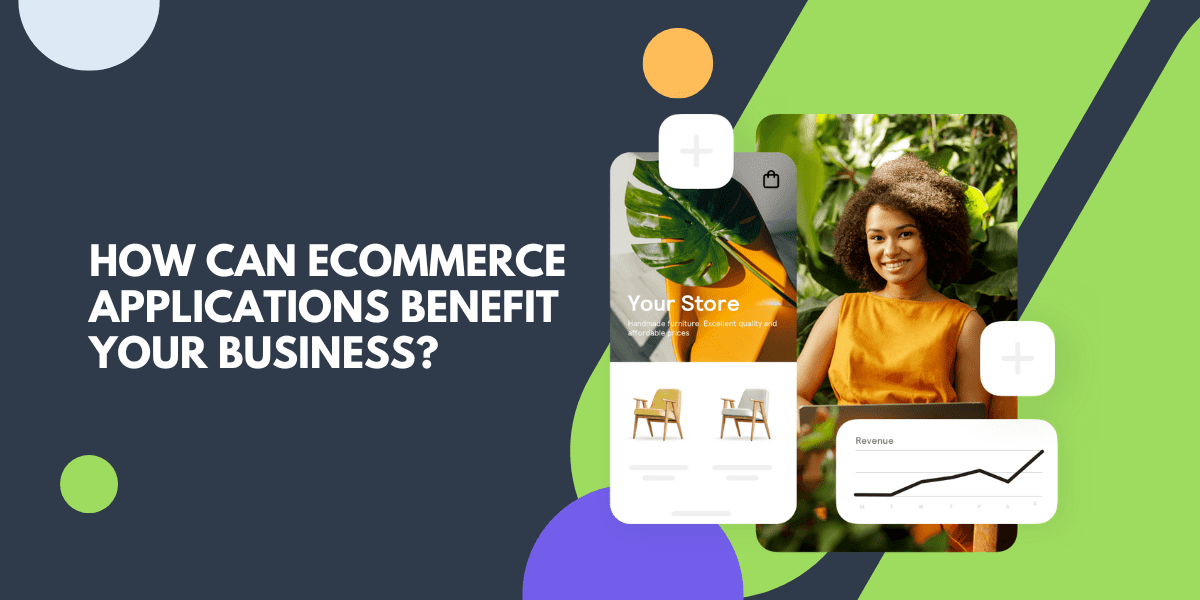
Customer Experience
Customers who are tech-savvy nowadays need a consistent and tailored experience across many devices. An eCommerce mobile app development is able to provide this function throughout the customer’s interaction with your business.
Mobile applications help collect customer data
A business mobile app facilitates the collection and analysis of user data, allowing you to better comprehend customer preferences and purchasing patterns and adapt your company appropriately. In addition, you may remind users of new arrivals, discounts, special offers, etc. depending on their specific preferences. This increases conversions by 7 to 12 percent with the same traffic.
Maximizing Your Business’s Social Media Exposure
Your eCommerce mobile app development allows you to connect all of your company’s communication channels, allowing customers to reach you without difficulty. Social sharing is more beneficial to your company than a retail clerk.
Brand Development
This is one of the most significant advantages of a mobile app for an eCommerce firm. A business specializing in designing ecommerce websites may include technologically advanced elements to provide app users with a pleasant and customized purchasing experience. Elegant UI/UX designs and customer-centric features may make an app brand-building and reputation-enhancing capabilities.
Marketing Equipment
An eCommerce application development for Android or iOS is more than a strong representation of your online company on the customer’s mobile device. A user-friendly eCommerce application is also an economical marketing tool. Through push notifications, you can keep your consumers informed of the purchase progress, payment reception, and any discounts or promotional offers.
Top 5 ECommerce Websites
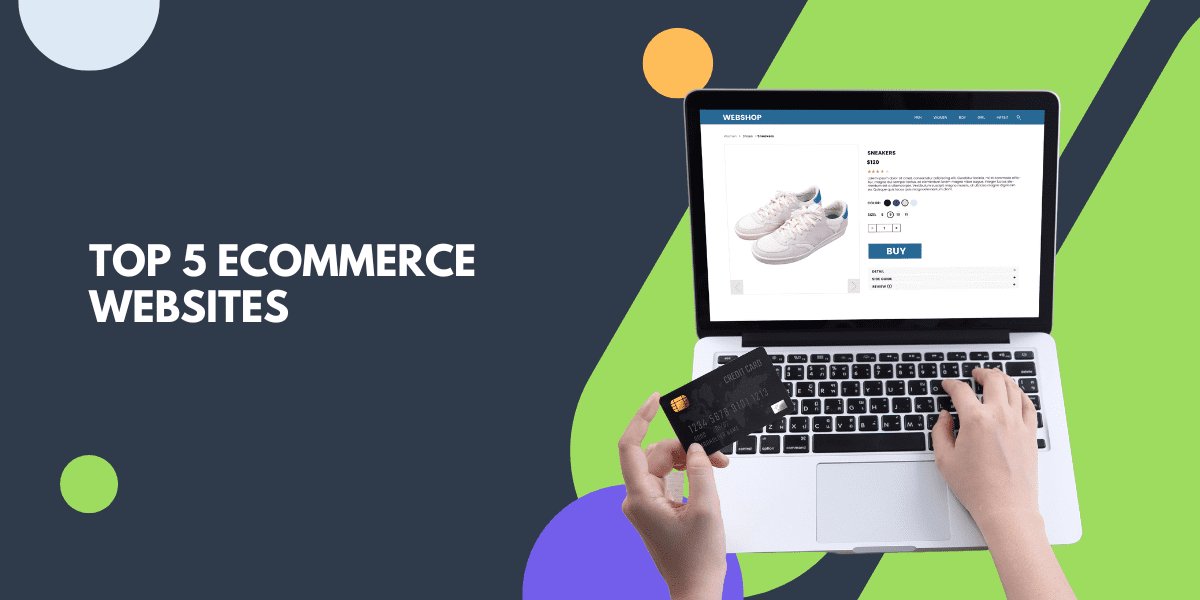
Amazon
Amazon is among the largest online retailers with a worldwide reach. Amazon’s SSR enables vendors to self-register in the marketplace, regardless of their location or catalog size. It allows merchants to begin selling within a day without the participation of a third party.
Walmart
Walmart’s online shoppers have access to a variety of items in categories. This include electronics, baby products, fashion, pharmacy, and auto-parts, making the site appealing to consumers with diverse profiles.
PayTm
PayTm is the second biggest e-commerce platform in India and a member of the unicorn startups club. With close to 120 million consumers on the site, PayTm Mall seeks to improve the purchasing experience in innovative ways.
Etsy
Etsy is a U.S.-born online marketplace that specializes in the selling of handmade, antique, and distinctive factory-made goods. Etsy’s e-commerce platform allows individuals and businesses to sell a vast array of things, including art, apparel and accessories, cuisine, bath and cosmetic products, toys, and a multitude of other unique items.
Myntra
Myntra is one of the most popular online retailers for fashion and leisure products. It offers a vast array of items, including apparel, footwear, and accessories. It focuses on providing clients with the most stylish brands. Myntra was bought by Flipkart in 2014.
Conclusion
Consequently, eCommerce website developers have accelerated dramatically to meet customer wants and expectations. The idea of obtaining an in-store experience while remaining at home has been attractive. It has prompted customers to establish criteria for ecommerce website developers. Connecting with technology service providers like Echo Innovate IT that provides ecommerce website development services will suit the objective of establishing an ecommerce application best. We are the top mobile app development company. We will help you transform the ecommerce company concept into the ideal ecommerce mobile application.
FAQs
What is a eCommerce app development?
An ecommerce app is a mobile application that enables online buying.
How long does it take for an ecommerce app development?
Custom development of ecommerce applications might take between three and twelve months. The same may be accomplished in one week to three months using a ready-made programme.
How can a mobile app for ecommerce benefit businesses?
The advantages of developing an ecommerce app include enhanced visibility, brand recognition, marketing, and an efficient user experience.
What are the main types of eCommerce apps in 2025?
The top eCommerce app types include:
B2B apps for wholesale/distribution
B2C retail apps for direct-to-consumer shopping
C2C marketplaces (e.g. resale platforms)
Subscription-based apps
Progressive Web Apps (PWAs)
AR/VR-powered shopping apps
Vertical-specific niche apps
Each type is tailored to a business model, buyer behavior, and preferred mobile experience (Android, iOS, or cross-platform).
Why should my business invest in a mobile commerce app (Android or iOS)?
In 2025, over 65% of eCommerce sales in the U.S. happen on mobile devices. Mobile apps offer faster performance, personalized content, push notifications, and secure payments—leading to higher conversion rates, better user retention, and increased customer lifetime value.
How much does it cost to build a basic vs advanced eCommerce app?
Basic eCommerce app: $15,000 – $40,000 (limited features, MVP level)
Advanced app: $50,000 – $150,000+ (AI, AR, loyalty systems, integrations)
Costs vary based on platform (iOS, Android, or both), tech stack, design complexity, backend integrations, and developer rates (USA vs offshore).
What are the must‑have features in a modern eCommerce mobile app?
Key features for 2025 include:
Fast onboarding and social login
Product search with AI-based filters
Secure payment gateway (Apple Pay, Google Pay)
Real-time order tracking
Push notifications and in-app messaging
AR for product visualization
Wishlist, reviews, and loyalty integration
Dark mode and accessibility compliance
Should I build native Android and iOS apps or use a cross‑platform framework?
Native apps (Swift for iOS, Kotlin for Android) offer best performance, UI fidelity, and hardware access. However, frameworks like Flutter and React Native allow faster development for both platforms with shared code—ideal for startups or budget-conscious SMBs.
How does an AI‑powered eCommerce app improve conversion rates?
AI improves UX by offering:
Personalized product recommendations
Predictive search results
Dynamic pricing and discounts
Smart inventory forecasting
Voice-assisted navigation
These AI tools reduce bounce rate, increase average order value, and enhance shopper satisfaction.
What are the SEO best practices for eCommerce app content in the USA?
Use keyword-rich titles, product names, and meta descriptions
Add schema markup for products and FAQs
Optimize images for fast mobile loading
Build topic clusters with internal linking
Use American English keywords with high U.S. search volume
Add authoritative author bios for E-E-A-T trust
Focus on mobile-first indexing with responsive design
